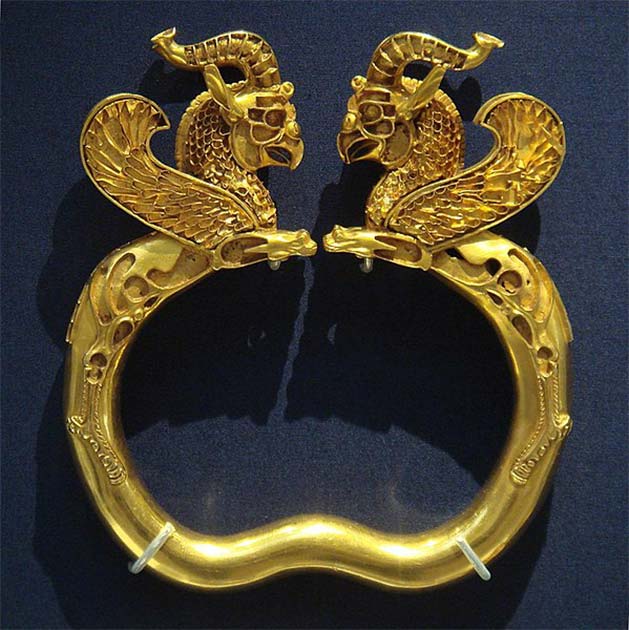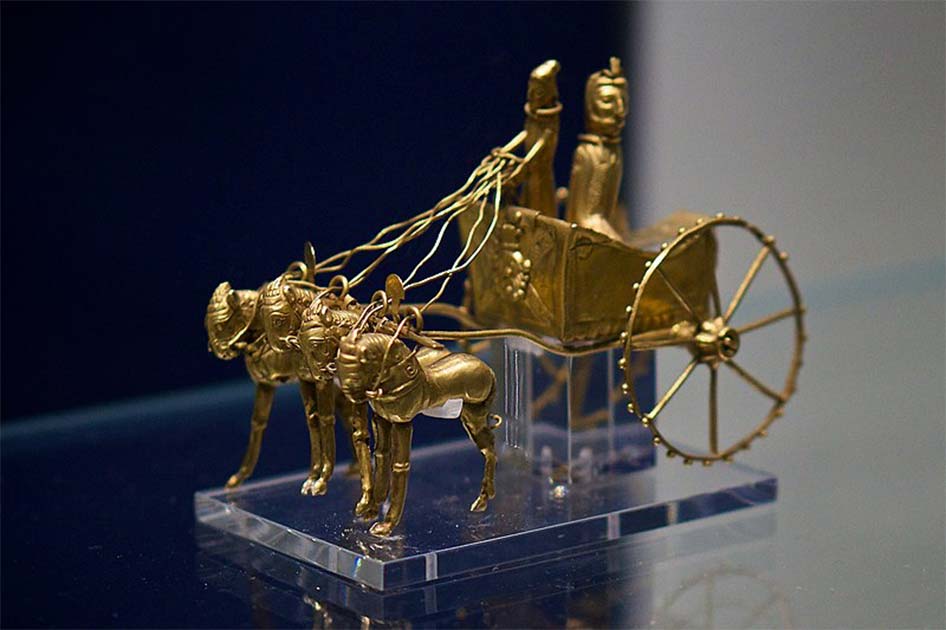The Oxus Civilization is also known in the archaeological world as the Bactria-Margiana Archaeological Complex (BMAC) in the area of Central Asia. It has various periods of urban development that date as far back as 2250 BC.
In modern geography, the area is located mostly in Margiana in modern Turkmenistan near the delta of the Murghab River. Some of the sites extend into Northern Bactria or modern-day Uzbekistan, but these are mostly graveyards: they buried their dead here, but they did not live here.
However, little is known by modern-day people about this civilization that thrived in the ancient world. How did this civilization, one of the greatest of the ancient world, come to be lost?
The Eras of the Oxus Civilisation
This region was first named in Old Persian as Bakhdi when it was part of the Persian government under the satrapy of Margus. Its capital was known as Merv which can still be visited today in modern South-eastern Turkmenistan.
Since then, it has been called Baxtris in Middle Persian and Baxl in New Persian. It was mentioned in Sanskrit texts from the ancient world as Bahlika. The term Bactria comes from the Ancient Greek of Baktriane which in itself was derived from the Old Persian.
- (In Pics) Ten Great Lost Civilizations of Peru that aren’t the Inca
- Olmec Civilization: Their Rise, Culture and Decline
The Oxus civilization went through several distinct eras. These can be characterized as follows:
Regionalization: this period begins in the areas of Anau and Kopet Dag in the years around 4,600 to 4000 BC before the copper age begins between 4,000 BC to 2,800 BC. It is during this period that the population of the area grew. The archaeologist V. M. Masson, who was in charge of the expedition in South Turkmenistan in 1946, claimed that he saw signs of migration from central Iran which brought the skills of metallurgy as well as other innovations to the area. It is thought that these people assimilated with the native population. In the times around 3,500 BC, there seems to be a unity of an area that is designated by two distinct pottery styles. A colorful one in the West and a more traditional style in the East.

Late Regionalization: as the Early Bronze Age came, the culture of Kopet Dag and Anau seems to have developed into an urban society. Digs have shown this. Altyn-Depe became a major center where pottery was wheel-turned, and grapes were grown.
Integration: the pinnacle of the urban development of this area was hit around the Middle Bronze Age in these areas: Kopet Dag, Margiana, and Southern Bactria. In Kopet Dag, the main site was named Namazga-Depe and it extended to a size of around 52 hectares (128 acres) with 17-20,000 people inhabiting it. It is expected to have lasted around 700 years from 2,400 BC to 1,700 BC.
In Margiana, the main site that has been investigated is Kelleli. This has been categorized by the appearance of the first palace buildings which appeared around 2,400 BC and 2,000 BC. Kelleli is found around 40 km (25 miles) northwest of Gonur and is made up of around 4 hectares (10 acres) of land. It has towers and double walls surrounding the structure. It has four equal entrances and houses in the Southwest area of the site.
In Southern Bactira, near Northern Afghanistan, the site of Dashly is thought to be one of the largest that existed in this period. It likely dated from after 2,300 BC until around 1,700 BC. This has also been identified as a palace. It is a rectangular fortified residence that had double outer walls and a T-shaped corridor flanked by an L-shaped corridor in the middle of each wall.
The Material Culture
The people who lived in the area of the BMAC have been found to have been sedentary people who used irrigation farming, usually for barley and wheat. Along with this, they created a large amount of material culture: nobody in the region before, or for a long time after, made and collected as much “stuff” as the Oxus.
This included large architecture, ceramics, bronze tools, and jewelry. In Altyn-Depe, there has been found some of the earliest evidence of wheeled transport in central Asia which have been found in two-wheeled carts dating from around 3,000 BC.
Though it should be noted that there is evidence of the wheel existing elsewhere earlier. Additionally, in Altyn-Depe, there has been a model of a cart being pulled by a camel dating to 2,200 BC. Aside from anything else, this shows that the animal was clearly already domesticated in this period.
- (In Pics) Seven Civilizations lost in the Bronze Age Collapse
- (List) Eight Strange Ruins of Africa that aren’t Egyptian
In terms of art, Bactrian princesses made from limestone and clay have been found and have been classed as fertility goddesses. This kind of find tends to indicate an agrarian Bronze Age society as does the finds of many metal objects of quite complex designs.

The Bactrian princesses are found wearing dresses that were styled and headdresses that merge with hair. Various figures have been found in different colors but all with intricate designs.
A single stone seal has been found at Anau that has geometric markings. This indicates that this civilization was in the process of developing writing.
The seal itself has five markings that resemble the Chinese small seal characters. Though only one of the markings on the Anau seal matches any Chinese characters. It was a small jet seal found along the Silk Road, but it is thought to date from 700 BCE.
Traders Over Great Distances
BMAC materials have been found around the area in different societies such as the Indus Valley, the Iranian Plateau, and within the Persian Gulf. This indicates that they were a society that participated in trade and in exchanging cultural artifacts.
For example, an Elamite-type cylinder was found at Gonur-depe. As well as this, there is evidence that the BMAC culture extended to the Eurasian steppes from around 2,000 BC. Water was changed from the delta of Amu Darya by people who resemble the findings of people from the Andronovo culture. This perhaps indicates a settling of a nomad culture in this area.
Despite all this, it has been speculated that the Oxus Civilisation collapsed around 1,700 BC. Many of the settlements were abandoned but the materials have continued to be found throughout Iran and in other cultures. But why they fell apart as a people, nobody can say.
Top Image: The Oxus left behind extraordinary treasures, and gave us a clear picture of how they saw themselves. Source: Djarell / CC BY-SA 4.0.
By Kurt Readman